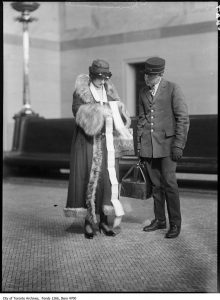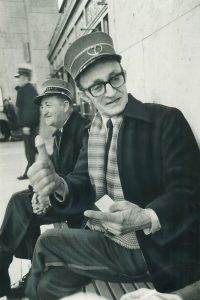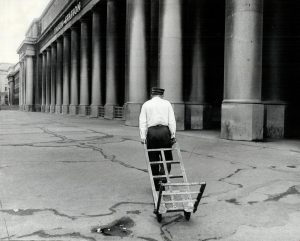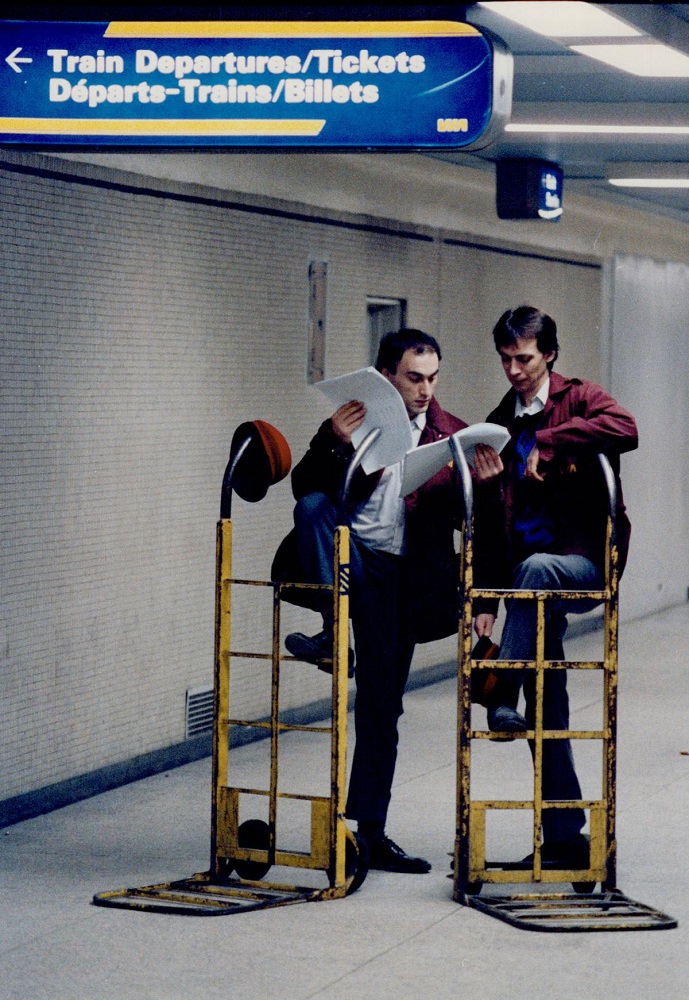Railway Riders: Peter Taylor
Railway Porters
Sleeping Car Porters first appeared in Canada in the 1870s. When on duty, Porters worked 72-hours shifts and were available 21 hours each day for service. Porters loaded sleeping cars with coal or wood for the journey, greeted passengers, stored luggage, pulled down beds in the evening, made up the seats in the morning, served food, mixed drinks, shined shoes, and cared for children and drunken passengers.
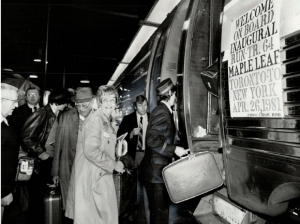
In this 1981 photo, a porter brings luggage aboard the first passenger train travelling from Toronto to New York City in over 20 years.
When recounting the job, Peter explained that the customers were often the best and worst part of the job. He enjoyed talking with people from around the world. At the same time, some passengers left their cabins very messy after their journeys. It was the Porter’s responsibility to clean them. Peter recounts being responsible for about 30 people, or an entire car. In that car, some people could be snobby and difficult, but customers could also be friendly and chatty.
Customer Service (captions available in both French and English). Enjoy this video with an English transcript.
Overall, this was also not an easy job:
What I do remember quite vividly was we used to sit in these tiny little areas, I recall in the back of the car where the staff would sit and I would sit there and sometimes somebody would ring a bell and you’d have to respond to that. Then, at a certain point you’d go down and do the rounds and to if anybody put their shoes in the little boxes, I don’t know if you ever saw those, so sometimes you’d open up their pair of shoes or you’d take them back and polish them, return them, and go to the next one. But it could be quite quiet, when there wasn’t a lot to do. Then sometimes people, if I remember, those who didn’t have the roomettes, the washroom was past where I was. So I’d sit there and some people come up to you wanting the washroom in the middle of the night but it was a no-sleeping situation, you were awake the whole trip.
– Peter Taylor, Sleeping Car Porter, 2020
Red Caps
Red Caps were another customer service position with the railways, not unlike porters. Starting in the late 1800s, Red Caps were employed by Union Station. Train stations hired Red Caps to help assist with the mass amount of luggage taken off from each passenger train. After the luggage was taken off the train, Red Caps could be hired to carry a passenger’s luggage to their hotel. In 1929, one hundred and fifty Red Caps worked at Union Station in two shifts. At least two passenger trains came in each hour.
By the end of their eight-hour shift, Red Caps pulled thousands of pieces of luggage off the trains. With the affordability of plane travel after the Depression, passenger trains became exciting to the public. By 1973, only twenty-four Red Caps were employed by Union Station, and they would become employees of VIA Rail in the 1980s.


